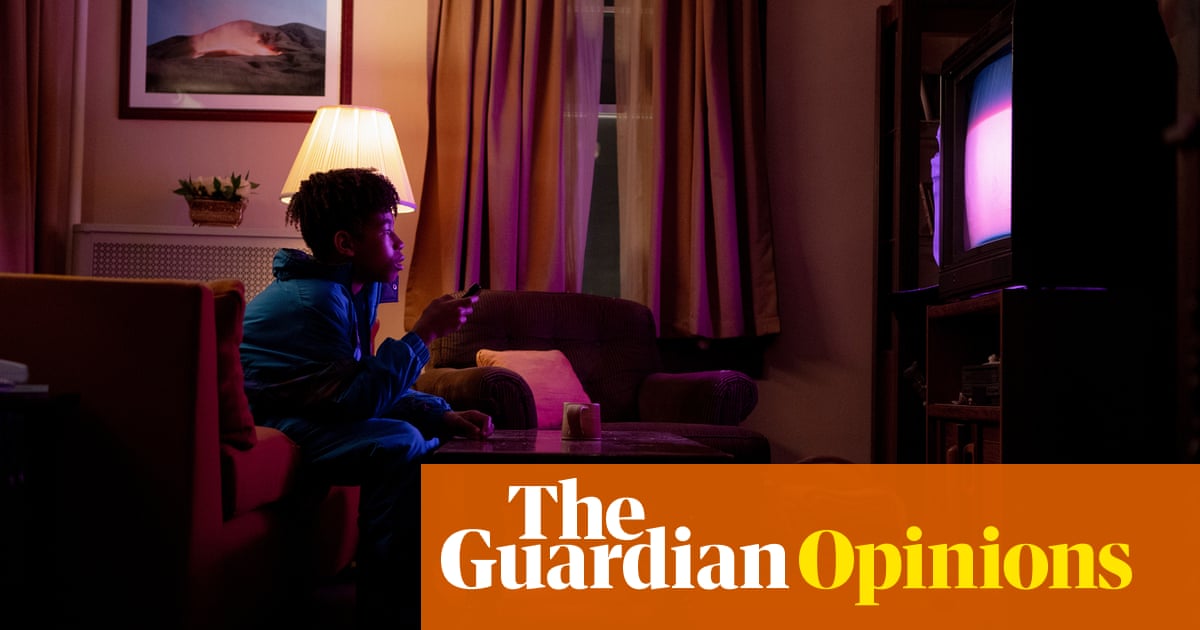
As a trans teen in the 1990s, I well remember the flickering glow of the TV screen. Late nights, once everyone else in the house had gone to sleep and I could have a measure of privacy, were the main time in which I could access something even remotely resembling my true self.
Watching the trans film-maker Jane Schoenbrun’s new film, I Saw the TV Glow, took me right back to this period of my life. As the title would indicate, Schoenbrun’s movie is all about the small screen and what it means in the lives of two queer teens growing up in the 90s.
These were times long before the internet as we now know it, long before the explosion in information around the existence and normality of trans people. It would be years before I would access a website connecting members of the trans community, well over a decade before I would even imagine that I could transition and be my real self.
What sustained me in those years were the few feminine items I had managed to get ahold of – which made me feel so absolutely right for some reason I could not understand at the time – and late-night TV shows that seemed to make sense to me. I remember that the shows that felt the realest tended to deal with horror, extremity and the bizarre – things like Tales from the Crypt, The Outer Limits, strange movies broadcast on PBS during the wee hours. These entertainments would flicker in the background in my darkened room as I took the time to feel feminine, against the abuse of my family and at ever-present risk of humiliation and punishment.
I Saw the TV Glow centers on Owen, a Black boy who is just entering his adolescence, and the slightly older Maddy, who seems to be transitioning in a feminine direction and who becomes a guide of sorts to Owen. Maddy mainly helps by smuggling Owen video cassettes of a strange TV show called The Pink Opaque, which hypnotizes the youths, even though it seems not to be a very good show and ostensibly has little to do with their reality.
Schoenbrun’s film is very much about what it’s like to be queer before you’re even in the closet. It’s when you know that you are different in some way, but haven’t yet figured out that maybe you have a different gender or sexuality than most people. This is a strange part of the journey, where you are gravitating toward an identity without entirely realizing it. Such a period was far lengthier and far more common before the internet and increased acceptance made queer identities more broadly legible. The 90s were probably the last time when so many young people sleepwalked toward a queer identity, mysteriously attracted to any bits of pop culture that seemed to speak to that strange feeling of difference.
Schoenbrun’s impressive capacity to create film-length metaphors brings viewers toward how this felt. Average wielders of metaphor create ideas that may work on a 1:1 or 1:2 level; very, very remarkable metaphor creators may operate on a 1:10 or 1:20 level. Storytellers like Schoenbrun blow away the ratio entirely. They create enormous metaphors of such complexity and energy that they defy our ability to map them from one conceptual terrain to another. It is easy enough to say that Jane Schoenbrun creates films that are about gender dysphoria, but trying to tell just how or why they work defies our ability to put it into so many words.
Watching the flickering screen of Schoenbrun’s I Saw the TV Glow, trying to figure out how what I was watching was speaking to me, I believe I felt something akin to what Owen and Maddy felt watching The Pink Opaque, experiencing the show’s hypnotic draw toward other terrain that they couldn’t quite articulate. By that same token, this film let me re-experience what the teenage me felt watching those shows during so many late nights before the glowing TV screen, connecting with a femininity that was beyond my ability to understand.
I Saw the TV Glow is a heartfelt take on the nostalgia genre that shows a great deal of empathy for the kids at the center of it. It holds their uncomprehending naivety and trauma with real care, as though trying to give these children the compassion they, and so many others, should have been able to receive in that era. Its kindness is something I have learned to bestow upon that younger version of myself, battling for years against the internalized hate and judgment that I was once taught to hold for myself and kids like me. Watching it, I felt how small and bewildered Owen and Maddy were, and I wished they had something better than a TV show to guide them. I wish I had too.
I Saw the TV Glow is out now in NY and LA cinemas with more dates to follow and a UK date to be announced












